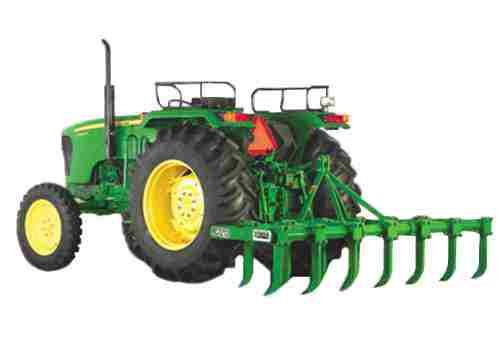Top 3 Agriculture Tools Uses and Features: KhetiGaadi

Agriculture tools refer to various implements, machines, and equipment used in farming practices to perform tasks such as ploughing, planting, cultivating, harvesting, and livestock management.
Agriculture tools are vital for improving agricultural efficiency, productivity, and sustainability. They reduce the reliance on manual labour and help farmers optimize resource usage, leading to increased crop yields and better agricultural operations management. From simple hand tools like shovels and hoes to complex machinery like tractors and combine harvesters, agriculture tools play a crucial role in modern farming, contributing to food production and supporting rural livelihoods worldwide.
What Is Farm Tools?
Farm tools are implements or equipment used in agricultural activities to carry out tasks like soil preparation, planting, harvesting, and livestock management. These tools assist farmers in optimizing productivity, reducing labour, and enhancing overall efficiency in farm operations.
Top 3 Agriculture tools name and uses
Tractor:
Use: Tractors are powerful vehicles used for various farming tasks, including ploughing, tilling, planting, harvesting, and hauling heavy loads. The tractor serves as the workhorse of modern agriculture, making farming more efficient and productive.
Features:
-
Diesel engine for high torque and power.
-
Transmission with multiple gears for speed control.
-
Three-point hitch for easy implement attachment.
-
Rear-mounted PTO for operating farm equipment.
-
Hydraulic system for precise implement control.
-
Four-wheel drive option for improved traction.
-
Operator-friendly controls for ease of use.
-
Cabin or ROPS for operator safety and comfort.
Power Tiller:
Use: A power tiller is a versatile agricultural machine used for various soil preparation tasks, such as ploughing, tilling, harrowing, and weeding. It is designed to reduce manual labour and increase efficiency in small to medium-sized farms.
Features:
-
Powerful engine for efficient performance.
-
Gear transmission for speed control.
-
Two or four wheels for easy maneuverability.
-
PTO shaft for implement attachment.
-
Adjustable handles for operator comfort.
-
Compatibility with various implements.
-
Versatility in soil preparation tasks.
Cultivator:
Use: A cultivator is an essential farm implement used for secondary tillage operations, including breaking up clods, mixing soil, and controlling weeds. It is particularly useful for maintaining soil structure and preparing seedbeds.
Features:
-
Multiple tines for soil penetration and weed removal.
-
Adjustable depth for precise soil tillage.
-
Different sizes and configurations for various farming needs.
-
Three-point hitch for easy tractor attachment.
-
Replaceable tines for cost-effective maintenance.
-
Suitable for secondary tillage and seedbed preparation.
-
Improves soil structure and nutrient distribution.
Other Agriculture Tools :
Here are some common agriculture tools along with their uses:
-
Shovel: Use: Digging and turning soil, planting seeds or seedlings, and moving loose materials.
-
Hoe: Use: Breaking up the soil, removing weeds, and shaping planting rows.
-
Rake: Use: Leveling soil, removing debris, and collecting leaves or grass cuttings.
-
Hand Trowel: Use: Planting small seeds or seedlings, transplanting, and weeding.
-
Pruning Shears: Use: Trimming and shaping plants, cutting branches, and harvesting fruits or flowers.
-
Wheelbarrow: Use: Transporting heavy loads of soil, compost, or harvested crops.
-
Seed Drill: Use: Sowing seeds at precise depths and intervals to optimize germination and crop yield.
-
Plough: Use: Turning and loosening soil in preparation for planting and improving soil aeration.
-
Harrow: Use: Breaking up clods of soil, leveling the field, and incorporating fertilizers or organic matter.
-
Thresher: Use: Separating the grain from its stalks and husks during the harvesting process.
-
Combine Harvester: Use: Harvesting, threshing, and cleaning grain crops in a single automated operation.
-
Seeder: Use: Planting seeds or applying fertilizer precisely in rows or bands.
-
Fertilizer Spreader: Use: Dispensing fertilizers, seeds, or other granular materials evenly across the field.
-
Soil pH Tester: Use: Determining the acidity or alkalinity of the soil to ensure optimal conditions for plant growth.
- Art
- Causes
- Crafts
- Dance
- Drinks
- Film
- Fitness
- Food
- Jogos
- Gardening
- Health
- Início
- Literature
- Music
- Networking
- Outro
- Party
- Religion
- Shopping
- Sports
- Theater
- Wellness
- IT, Cloud, Software and Technology


